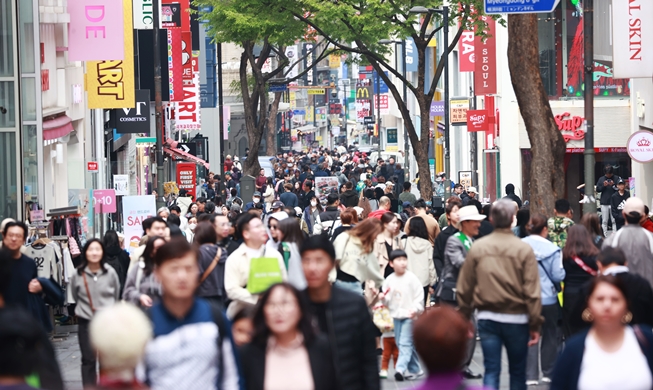-
 Korea.net's 24-hour YouTube channel
Korea.net's 24-hour YouTube channel- NEWS FOCUS
- ABOUT KOREA
- EVENTS
- RESOURCES
- GOVERNMENT
- ABOUT US
Located in Yongsan-gu (district) in Seoul, the three-story building covers 11,322 square meters. It is composed of permanent and special exhibition halls, a Children’s Museum, a Hangeul Learning Center, a library and other amenities. Museum visitors can view about 10,000 items and works of art which represent the symbolic and historical meaning of Hangeul, from its creation down through to the present.
On the second floor, the permanent exhibition hall shows the past, present and future of Hangeul, under the theme, “The Journey That Hangeul Went Through.” Visitors can see some important Hangeul-related documents, such as the "Proper Sounds for the Instruction of the People," or the "Hunminjeongeum" (1446). It describes the new and innovative script for the Korean language. There is also the "Songs of the Dragons Flying to Heaven," or “Yongbieocheonga” (1447), the first work written in Hangeul and Chinese characters compiled during the reign of King Sejong the Great. Finally, there is a book about the life of Buddha, the “Worinseokbo” (1459), written in Hangeul and Chinese characters, as well as other Hangeul-related texts. The exhibition also features collections of letters written in Hangeul by King Jeongjo (r. 1776-1800) and other royal family members. There are scores written in Hangeul, daily-use items featuring Hangeul, such as porcelain items and a small dining table, as well as collections of poems in Hangeul. The works on display include the first official Korean language textbooks used after the establishment of the modern Korean government and some of the first typewriters developed by Gong Byeong-wu which represent the mechanization and digitalization of Hangeul.
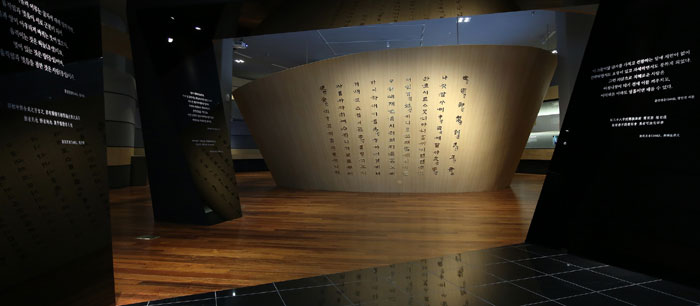
The permanent exhibition hall presents Hangeul-related documents and artwork, all under the theme of 'The Journey That Hangeul Went Through.'
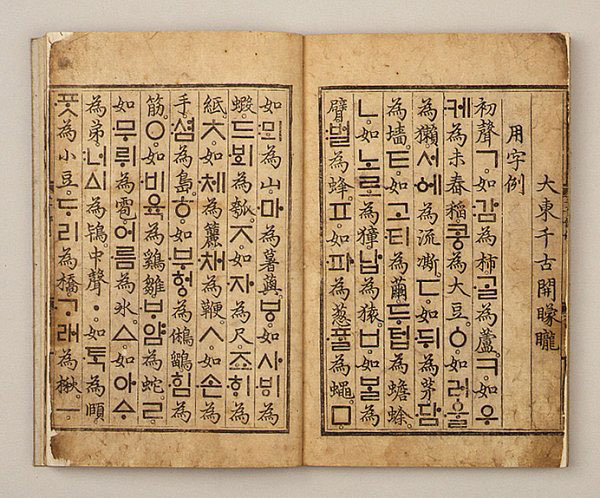
'The Proper Sounds for the Instruction of the People,' or the 'Hunminjeongeum', describes the new and innovative script for the Korean language as promulgated by King Sejong the Great in 1446.
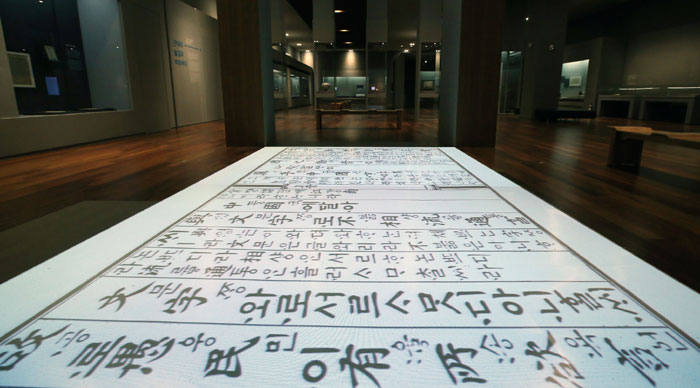
The permanent exhibition hall is decorated with a digital image of ‘The Proper Sounds for the Instruction of the People,’ or the ’Hunminjeongeum.’
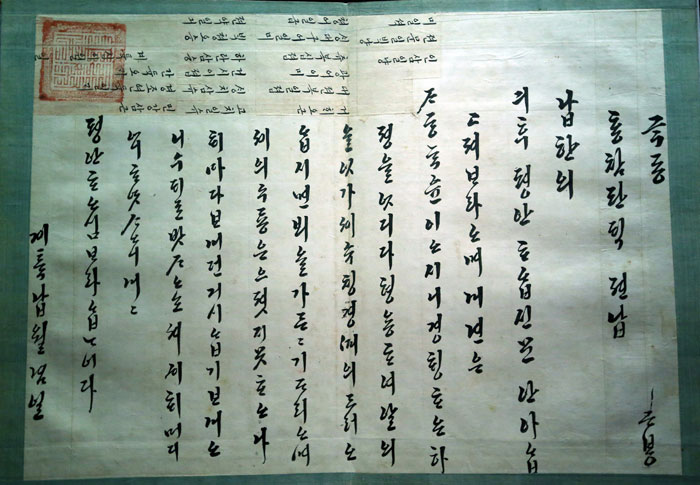
Part of the collection of letters written in Hangeul by King Jeongjo (r. 1776-1800).
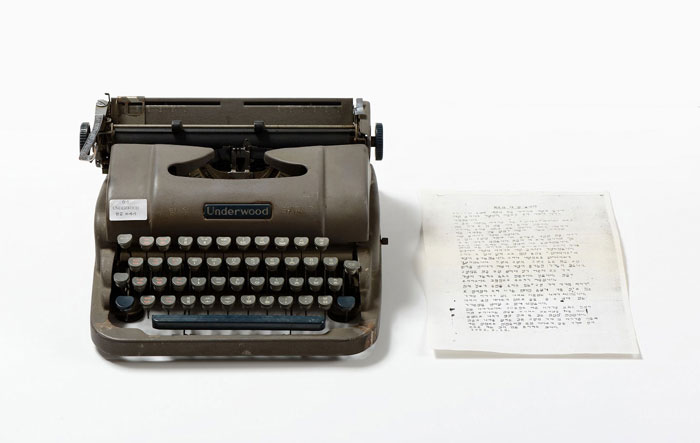
One of the first Hangeul typewriters, as developed by Gong Byeong-wu in 1947.
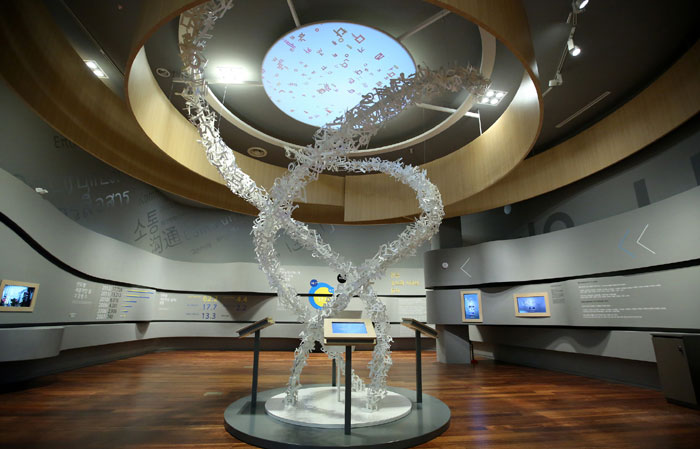
In the above photo, a triple helix of Hangeul vowels and consonants reaches for the sky. The screens on the wall in the permanent exhibition hall show the way in which Hangeul developed over the years. They outline the background of the newly-invented script through to the growing international recognition of Hangeul today.
On the third floor of the museum, there is an exhibition about King Sejong the Great (r. 1418-1450), the monarch who oversaw the creation of Hangeul and who laid the foundation for many aspects of modern Korean culture. This exhibition, “King Sejong the Great Opens the Age of Hangeul Culture,” houses many ancient relics and documents that are related to the legacy and life of the 15th century monarch.
Visitors can also enjoy artwork created by modern artists who have reinterpreted Hangeul-based themes and the spirit behind the invention of the new writing system. Some of the noticeable works include an installation work of art, “Sound Looking-Rain,” by Kim Ki-chul. Surrounding the royal seal used by King Sejong, a total of 128 speakers generate the sound of raindrops falling on the main building of the Jongmyo Shrine. The reproduced sound of the rain inside the dark room creates a mystic, solemn mood for the royal seal, which shines in bright gold in the center of the room. The hall also features about ten other modern artists who showcase their works on Hangeul-based themes.
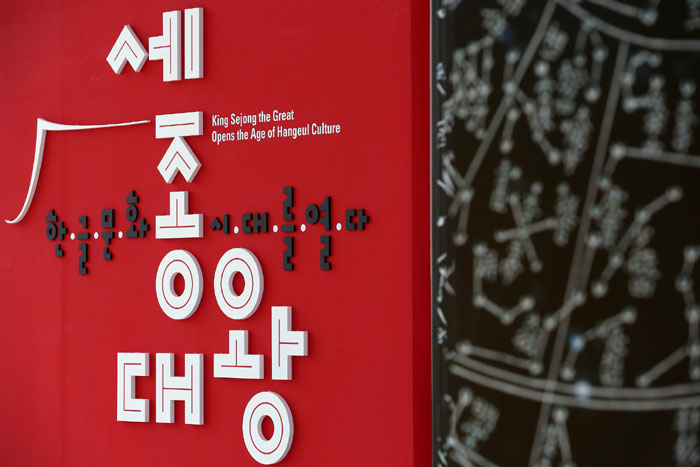
The third floor houses the 'King Sejong the Great Opens the Age of Hangeul Culture' special exhibition hall. Visitors can see historical artifacts and artwork created by modern artists who reinterpret many Hangeul-based themes concerning the invention of the new alphabet.
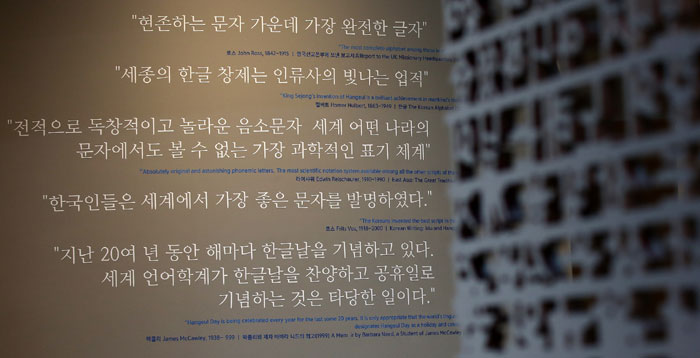
A plaque in the entrance to the special exhibitions hall lists some of the academic recognitions received by the Hangeul alphabet and the principles of its invention.
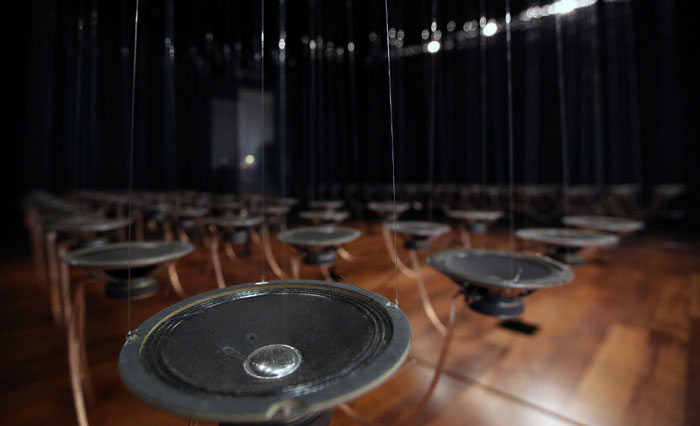
A work of installation art, 'Sound Looking-Rain,' reproduces the sound of raindrops falling on the main building of the Jongmyo Shrine using an array of speakers.
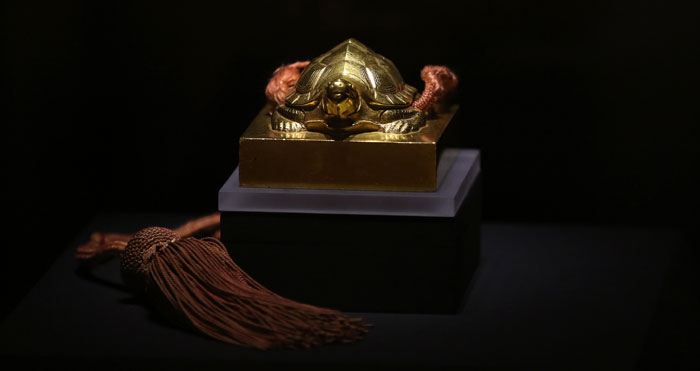
The royal seal used by King Sejong is located in the center of the installation work of art 'Seeing the Sound -- Rain' by Kim Kicheol.

Modern artist Noh Ju-hwan has a range of Hangeul-inspired artworks on display. Visitors can interact with the works of art by coloring each of the carved letter clusters in his work 'Box of Wisdom.'
The museum also offers space for children and non-Korean speakers. The Children’s Museum on the third floor lucidly explains the background behind the invention of Hangeul. Children can engage in various games and activities, play with consonant- and vowel-shaped toys and learn about the principle compositions of the Hangeul letters.
Opposite the Children's Museum is the Hangeul Learning Center. It focuses on helping non-Korean speaking visitors understand Hangeul and introduces to them the composition of Hangeul, pronunciation, how to write their name in Hangeul and how to write the name of their home country in Korean.
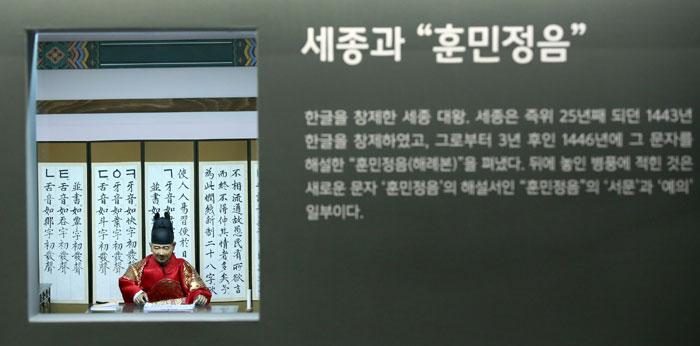
The Children’s Museum tells the story of King Sejong the Great, the monarch who oversaw the invention of Hangeul.
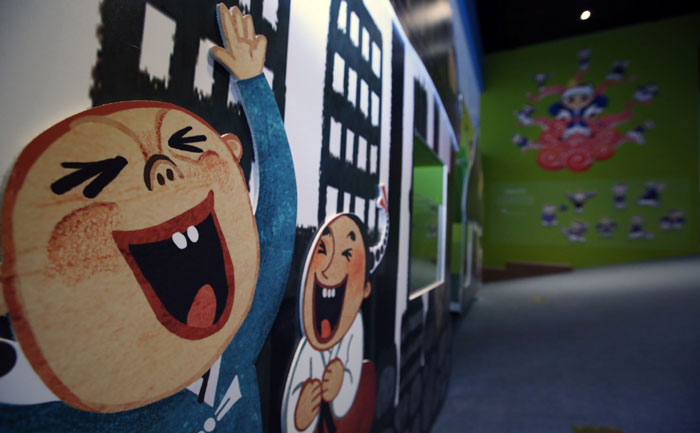
In the Children’s Museum, people can learn more about the 'Tale of Hong Gildong,' or, 'Hong Gildong-jeon,' the first novel written in the native Korean script.
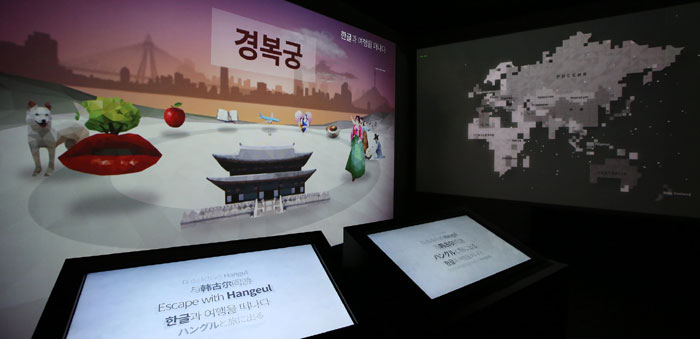
The Hangeul Learning Center introduces Hangeul to non-Korean speakers. The above photo shows many of the more common Korean words.
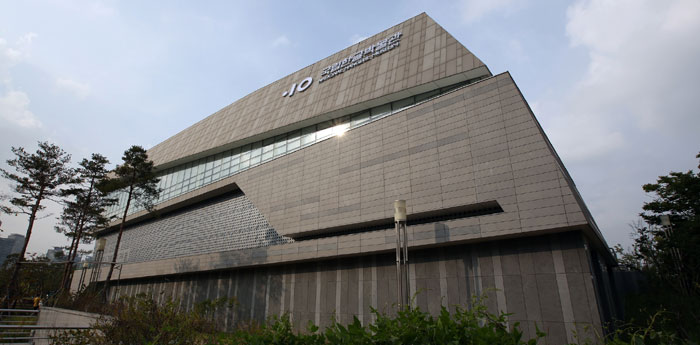
The National Hangeul Museum opens to the public on October 9.
The museum's opening ceremony will be held on October 8. On October 9, Hangeul Day and a national holiday, the museum will host a series of special events, including a quiz show where winners can earn Hangeul-related prizes. The museum will also feature a bus decorated with both Hangeul writing and pictures of the popular cartoon character "Tayo, the Little Bus."
On October 11, the museum will host a Hangeul-themed concert and an open discussion session with the modern artists who participated in the special exhibition.
The museum offers free admission and is open from 9:00 a.m. to 6:00 p.m. It is closed every Monday. More information about the museum is available at its homepage (http://www.hangeul.go.kr).
By Yoon Sojung
Korea.net Staff Writer
Photos: Jeon Han, the National Hangeul Museum
arete@korea.kr
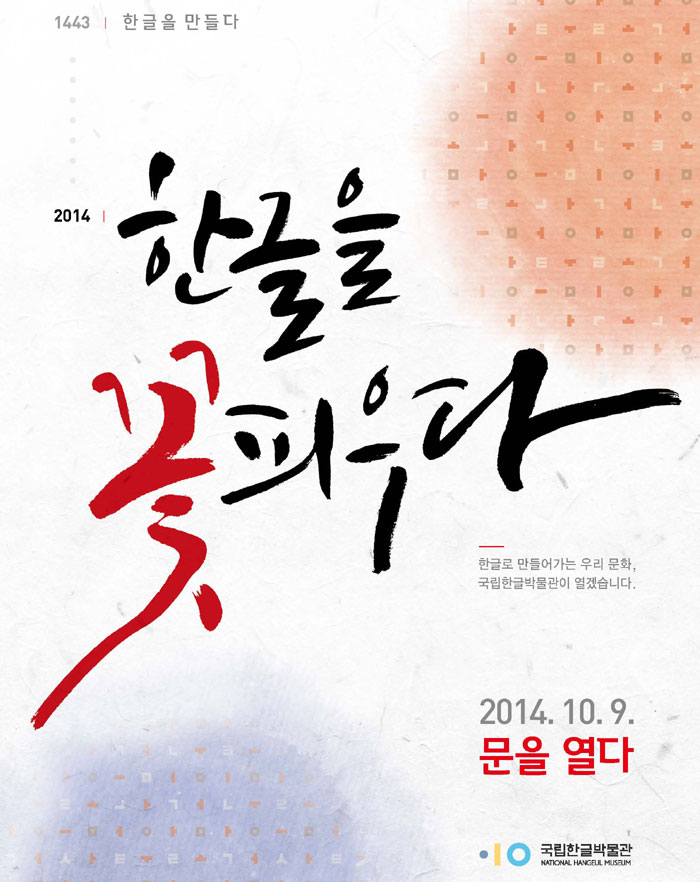
A poster introduces the opening of the National Hangeul Museum.
Most popular
- First hearing-impaired K-pop act hopes for 'barrier-free world'
- 'Mad Max' director impressed by 'cinema-literate' Korean viewers
- Romanian presidential couple visits national cemetery
- 'Korean mythology is just as wonderful as Greek and Roman'
- Hit drama 'Beef' wins awards from 3 major Hollywood guilds




